Eco-leather is a universal material used in the production of haberdashery goods, clothing, shoes, furniture and car seat covers. The material is made by applying a porous polyurethane film to a cotton base. The elastic film is absolutely non-toxic, safe, breathable, but its service life cannot be called long.
About eco-leather repair

There are several ways to repair a leatherette product. Aerosol paints and shoe polishes help disguise shallow scratches and minor abrasions.
When starting to renew the material, prepare fabric paint in cans, warm water, a foam sponge, dishwashing detergent and orange peel.
How to restore eco-leather
Gloves, a purse, a business card holder that have lost their shine and color saturation are wiped with fresh orange peel. But keep in mind that the product will fade again in just a week. Grease stains are perfectly removed by dishwashing detergents.Drop a little product onto a damp sponge and wipe the contaminated area with it.
The gel can be washed off immediately or left for several hours. Gasoline or turpentine helps fight stubborn stains. Professional paints for artificial and natural leather perfectly renew the color. The coloring pigment literally penetrates into the structure of the fabric.
The main advantage of this method is the rich color palette: from neutral colors to acidic shades. Transparent varnish is used as the finishing layer. Aerosols paint over areas with peeling paint, fill small scratches and smooth out the surface. The product should be applied in the thinnest layer: a large amount of paint is the main reason for the formation of smudges and cracking of a freshly painted area.
Important! Aerosol paints should be sprayed at a distance of 20-30 cm.
Methods and materials
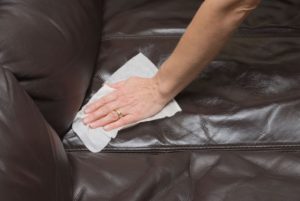
An alternative to aerosols and professional paints is liquid leather. The product contains an adhesive base, dyes and rubber resin.
Liquid leather creates a so-called leather relief on the surface. Ideal at first glance, the material has its drawbacks. For example, it is only suitable for filling scratches, cuts and punctures. It will not be possible to patch a large gap.
Difficulties also arise when choosing the right shade. Rare colors are obtained only by mixing primary tones. During work, you must strictly follow the instructions and not neglect the basic laws of color. It is unlikely that you will be able to choose an unusual color palette with a predominance of golden and silver shades.
Manufacturers offer only classic colors: black, white, red, green, blue, yellow, brown, gray.Liquid leather recreates both glossy and matte textures.
What to look for when doing your own repairs and choosing materials
The main thing in restoring eco-leather is recreating the relief pattern. A small area (no more than 1 cm2) It's better to paint with a brush. The surface is pre-degreased for better adhesion of the eco-leather to the polymer material. The place of puncture, cut, or scratch is cleaned of protruding fibers of fabric and glued with gauze from the inside.
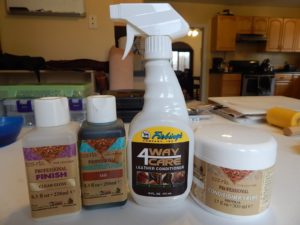 Liquid leather is applied in two stages: first, a very thin first layer, then a second layer, applied after two to three hours. Restored eco-leather dries completely within 24 hours.
Liquid leather is applied in two stages: first, a very thin first layer, then a second layer, applied after two to three hours. Restored eco-leather dries completely within 24 hours.
This method is only suitable for perfectly smooth surfaces. An ordinary napkin on which liquid leather is applied will help to recreate the relief. The napkin must be applied to the entire area with a clearly embossed pattern, and then dried for ten hours. This blank will serve as a template for creating natural irregularities.
The napkin should be applied only after applying two layers. You can get an imprint using a piece of natural or artificial leather, which is cut from old shoes or gloves.
Attention! Never apply liquid leather in a thick layer.
How to restore eco-leather on a sofa
Leather furniture looks impressive and stylish. People are increasingly refusing to buy expensive sofas and armchairs upholstered in natural leather due to high costs and ethical principles. An inexpensive alternative has become eco-leather, which in appearance is practically no different from natural leather, and in some respects even surpasses it.
Liquid leather is rightfully considered the best material for the restoration and restoration of ecological leather.The polymer material fills cracks, cuts, marks from teeth and claws.
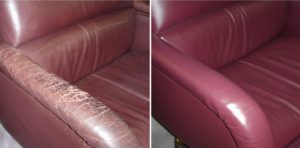 Restoration work is carried out in several stages:
Restoration work is carried out in several stages:
- the surface is leveled, threads and fibers are removed;
- the edges of the cut or hole are carefully stitched or glued from the inside;
- eco-leather is wiped with liquid detergent and dried;
- the desired shade is selected by mixing several basic colors;
- liquid skin is applied with an art brush or foam rubber;
- The repaired sofa is left to dry for a day.
Attention! You can remove smudges and level the layers using a student’s ruler or ordinary plastic card.
How not to ruin your sofa completely
If abrasions and damage occupy a large area, then the furniture cannot be restored. It is also unlikely that a sofa upholstered in eco-leather in an exotic color (light green, turquoise, coral, terracotta, lilac) will be able to return to its original appearance. At home, it will not be possible to recreate a complex and ornate design using a napkin or a piece of old leather.
A little about the choice of materials for repairs
The leader among manufacturers of restoration pastes is the French company Saphir. Restoring cream extends the service life of damaged, worn and discolored products. The product is suitable for smooth surfaces; when applied, it creates a durable and elastic layer that repels water. Saphir does not stain clothes and dries quickly.
Precautions during repairs
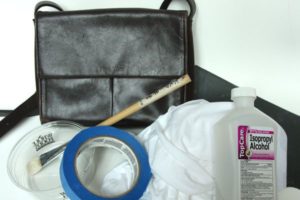
When working with liquid leather, you should wear plastic gloves. These gloves are used by hairdressers when coloring hair. Rubber products are not suitable.


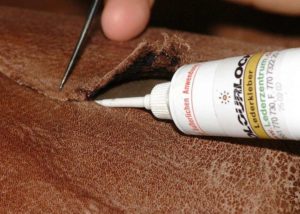
 0
0

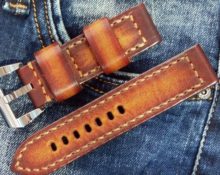
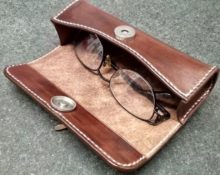
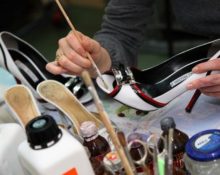


Useful lifehack!